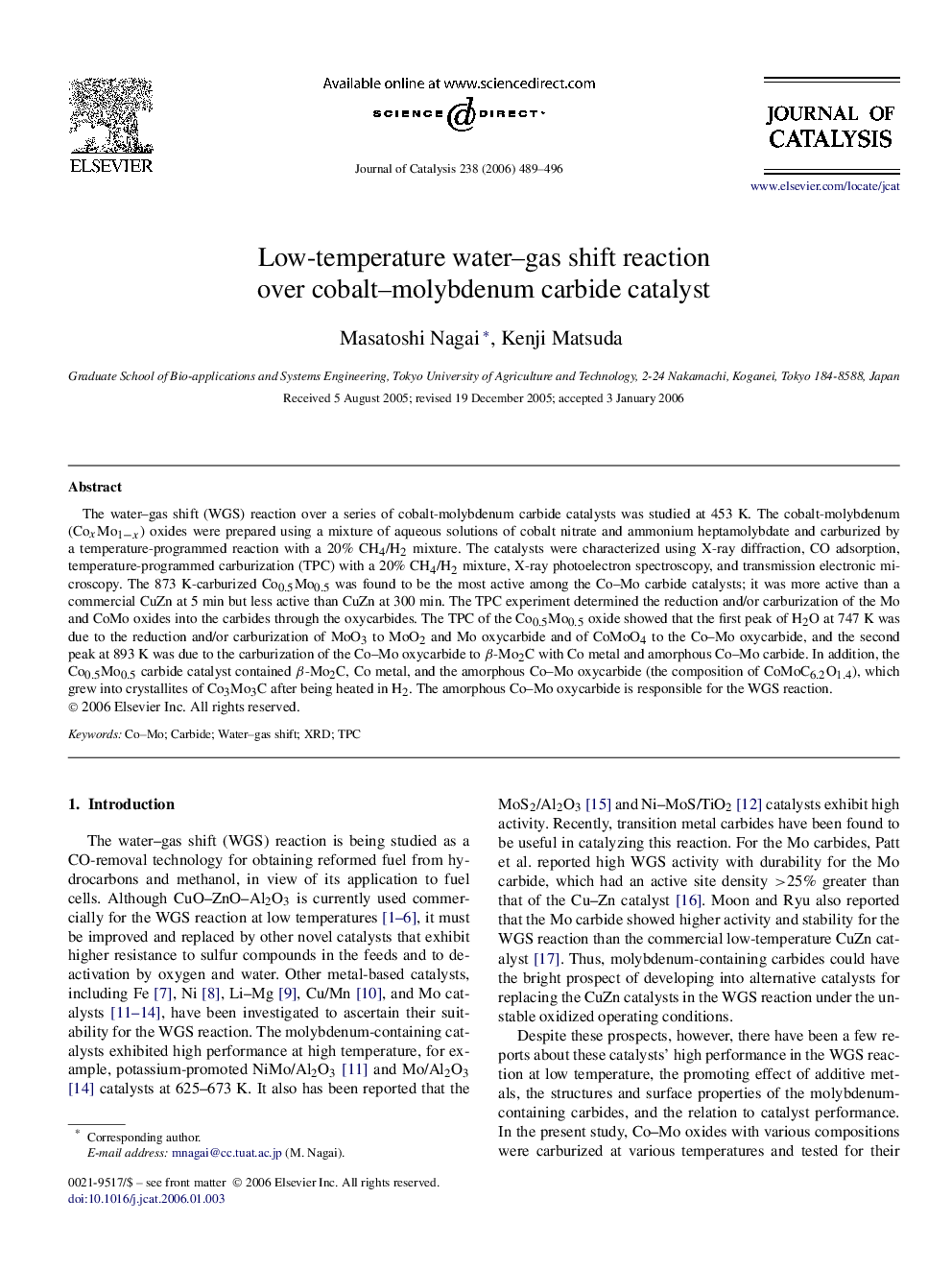| Article ID | Journal | Published Year | Pages | File Type |
|---|---|---|---|---|
| 63237 | Journal of Catalysis | 2006 | 8 Pages |
The water–gas shift (WGS) reaction over a series of cobalt-molybdenum carbide catalysts was studied at 453 K. The cobalt-molybdenum (CoxMo1−x) oxides were prepared using a mixture of aqueous solutions of cobalt nitrate and ammonium heptamolybdate and carburized by a temperature-programmed reaction with a 20% CH4/H2 mixture. The catalysts were characterized using X-ray diffraction, CO adsorption, temperature-programmed carburization (TPC) with a 20% CH4/H2 mixture, X-ray photoelectron spectroscopy, and transmission electronic microscopy. The 873 K-carburized Co0.5Mo0.5 was found to be the most active among the Co–Mo carbide catalysts; it was more active than a commercial CuZn at 5 min but less active than CuZn at 300 min. The TPC experiment determined the reduction and/or carburization of the Mo and CoMo oxides into the carbides through the oxycarbides. The TPC of the Co0.5Mo0.5 oxide showed that the first peak of H2O at 747 K was due to the reduction and/or carburization of MoO3 to MoO2 and Mo oxycarbide and of CoMoO4 to the Co–Mo oxycarbide, and the second peak at 893 K was due to the carburization of the Co–Mo oxycarbide to β-Mo2C with Co metal and amorphous Co–Mo carbide. In addition, the Co0.5Mo0.5 carbide catalyst contained β-Mo2C, Co metal, and the amorphous Co–Mo oxycarbide (the composition of CoMoC6.2O1.4), which grew into crystallites of Co3Mo3C after being heated in H2. The amorphous Co–Mo oxycarbide is responsible for the WGS reaction.
